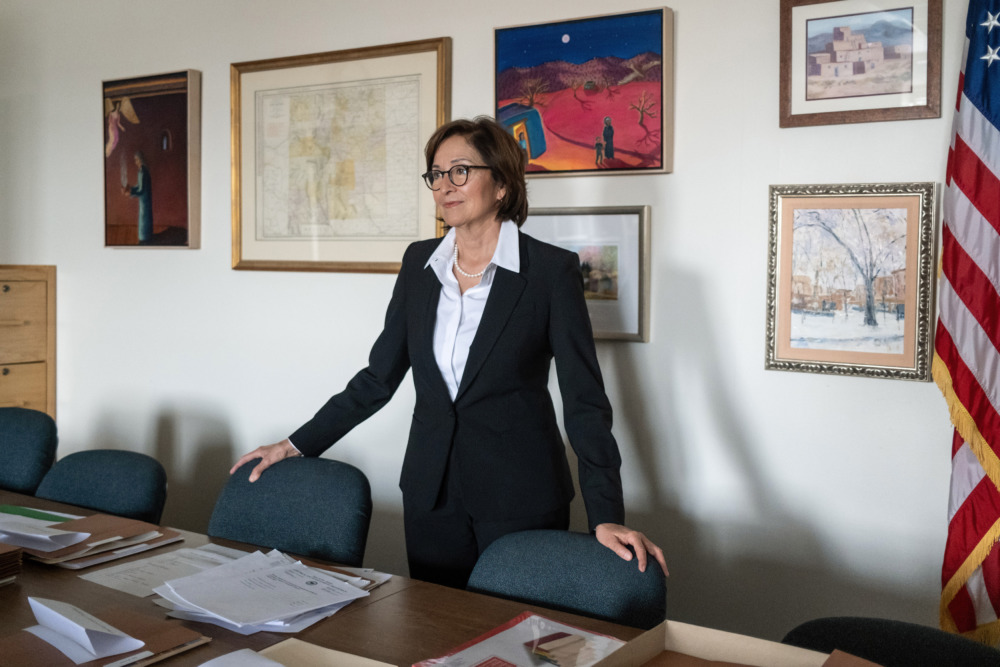ALBUQUERQUE, N.M. — New Mexico’s child protective services department is set to receive a funding boost officials say will be used to improve services for foster youth, including creating more specialized placements for some of the state’s most vulnerable kids.
During the 2022 New Mexico Legislature, state lawmakers approved a 9.4% funding increase for the Children, Youth and Families Department. CYFD, which asked for nearly $255 million for its general fund ahead of the legislative session, will receive approximately $230 million for its 2023 general fund operating budget. The department’s overall budget is expected to be over $346 million.
The budget increase doesn’t account for a federal match of close to $10 million that’s likely vanishing when the next fiscal year, which begins July 1, 2022.
“We’re expecting that federal money to disappear and we’re going to have to figure out ways to pay [the difference],” said CYFD spokesperson Charlie Moore-Pabst. The $10 million includes $6 million for protective services, $2.8 million for behavioral health services, and $900,000 in program support.
Some of the additional state money will be dedicated to boosting security measures for CYFD in-office staff and filling gaps in specialized residential services for youth experiencing severe mental illness. Moore-Pabst said that youth exiting these treatment facilities are often placed in traditional and treatment foster care, and that this population needs more options for psychiatric care.
“If the needs were high enough that they needed to be in residential treatment, sending them back to a lower rung of care is not helpful,” said Moore-Pabst. CYFD will dedicate over $3 million in establishing more 12- to 14-bed sub-acute residential facilities throughout the state, they said.
The state’s child welfare agency will also shift empty positions from juvenile justice to behavioral health services, and collaborate with the New Mexico Human Services Department to provide community health services in accordance with a legal settlement the state entered into following a lawsuit alleging it re-traumatized children in its care.
Additionally, the department is carrying over a $7 million appropriation from 2022 to modernize its case management software. In June 2021, two fired CYFD employees filed a whistleblower suit against the department, former cabinet secretary Brian Blalock, and deputy cabinet secretary Terry Locke, alleging that CYFD violated state procurement laws when pursuing a no-bid, multi-million dollar information technology program.
CYFD also received a $500,000 appropriation for domestic violence services. Plans to open the state’s first safe house for sex trafficked youth are also moving forward — the agency recently released a request for applications for the safe house’s provider.
In March, Gov. Michelle Lujan Grisham signed into law an all-time high budget following the conclusion of the legislative session. In addition to CYFD’s increased financial support, New Mexico’s $8.72 billion general fund budget, an increase of 14% from 2022, includes more dollars dedicated to K-12 public school educators and support staff.
UPDATE: Following publication of this article, CYFD spokesperson Charlie Moore-Pabst provided the following statement:
We wish to clarify the department’s priority with respect to behavioral health services and correct a misconception about our priorities. In my statement, as published, it appears that the department sees residential treatment as the best option for children and sub-acute congregate care as a second-best. This is not true. In practice and in line with our Kevin S settlement, sub-acute residential is not the least restrictive setting nor is it a preferred placement. Community-based supportive family placements either with multi-systemic therapy, treatment/specialized foster care, or other non-congregate settings are the better option.

























